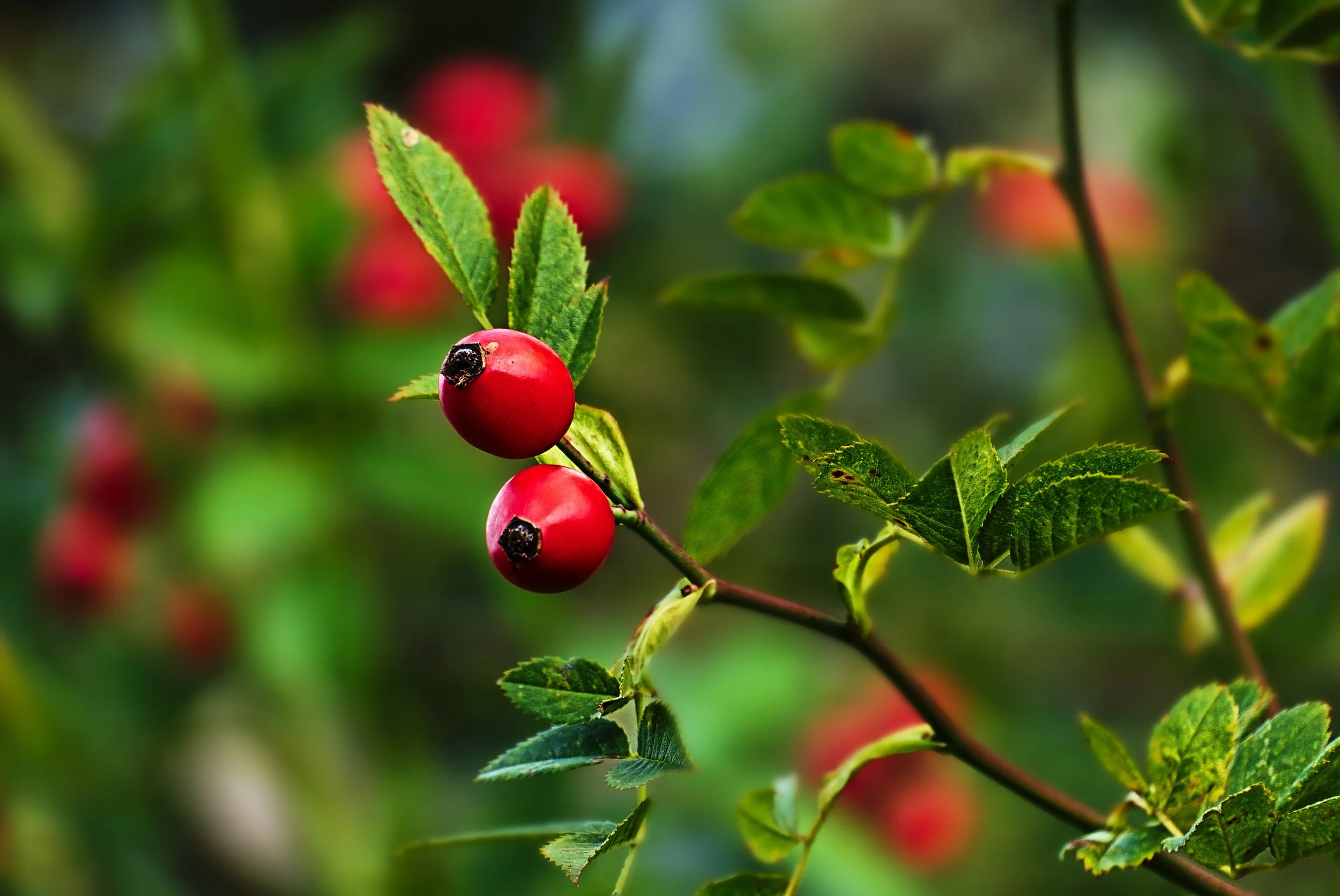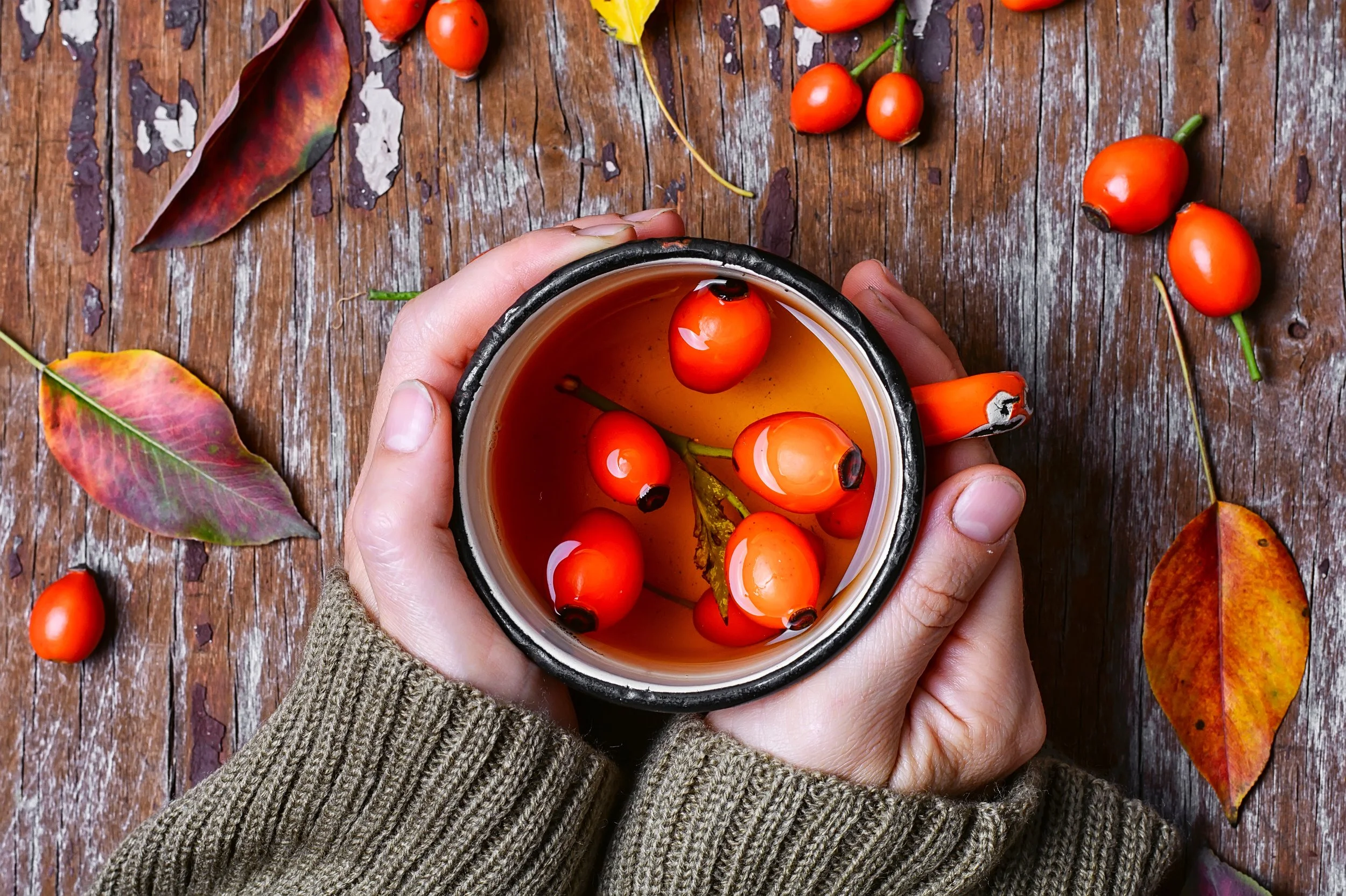
Therapeutics
astringent, anti-inflammatory, antioxidant, carminative, emollient
Plant Anatomy & Growth
The dog rose (aka wild rose) bush produces rose hips as a type of pseudo fruit. The shrub is medium-sized with branching stems adorned with thorns and alternating leaves. Usually these leaves are serrated and oblong in shape. The flower we all know well burst into bloom in late spring in a vast variety of colors and sizes.
Native across Europe, Northern Africa and Asia. The dog rose prefers well drained soil and can handle many types of soil, even high clay soils.
The shrub blooms in mid to late summer and once fertilized the flowers transform into the rosehips. Allow the rosehips to fully develop before harvesting and then dry completely before pressing.
Color
oil is amber to orange in color and clear
Scent
nutty, and vegetable-oil esc
Taste
mild and nutty
Quality
lightweight oil with fast absorption leaving a mild scent that dissipates quickly.
Constituents
The oil is composed of fatty acids including linoleic acid, linolenic acid, carotenoids including beta-carotene, tocopherols, volatile oils, and Vitamin C and A.
Uses
The oil may be applied directly to the skin, as well it can be ingested for an extra boost of antioxidants in your diet.
Rosehip oil contains Vitamin C which may interfere with medication for diabetes, please consult your practitioner prior to use.
References
Mármol, I., Sánchez-de-Diego, C., Jiménez-Moreno, N., Ancín-Azpilicueta, C., & Rodríguez-Yoldi, M. J. (2017). Therapeutic Applications of Rose Hips from Different Rosa Species. International journal of molecular sciences, 18(6), 1137. https://doi.org/10.3390/ijms18061137
Cohen M. (2012). Rosehip - an evidence based herbal medicine for inflammation and arthritis. Australian family physician, 41(7), 495–498. https://pubmed.ncbi.nlm.nih.gov/22762068/
Uysal, H. (2013). Can the Rosa canina Plant be Used Against Alkylating Agents as a Radical Scavenger. Polish Journal of Environmental Studies.
Lattanzio, F., Greco, E., Carretta, D., Cervellati, R., Govoni, P., & Speroni, E. (2011). In vivo anti-inflammatory effect of Rosa canina L. extract. Journal of ethnopharmacology, 137(1), 880–885. https://doi.org/10.1016/j.jep.2011.07.006
Lin, T. K., Zhong, L., & Santiago, J. L. (2017). Anti-Inflammatory and Skin Barrier Repair Effects of Topical Application of Some Plant Oils. International journal of molecular sciences, 19(1), 70. https://doi.org/10.3390/ijms19010070


